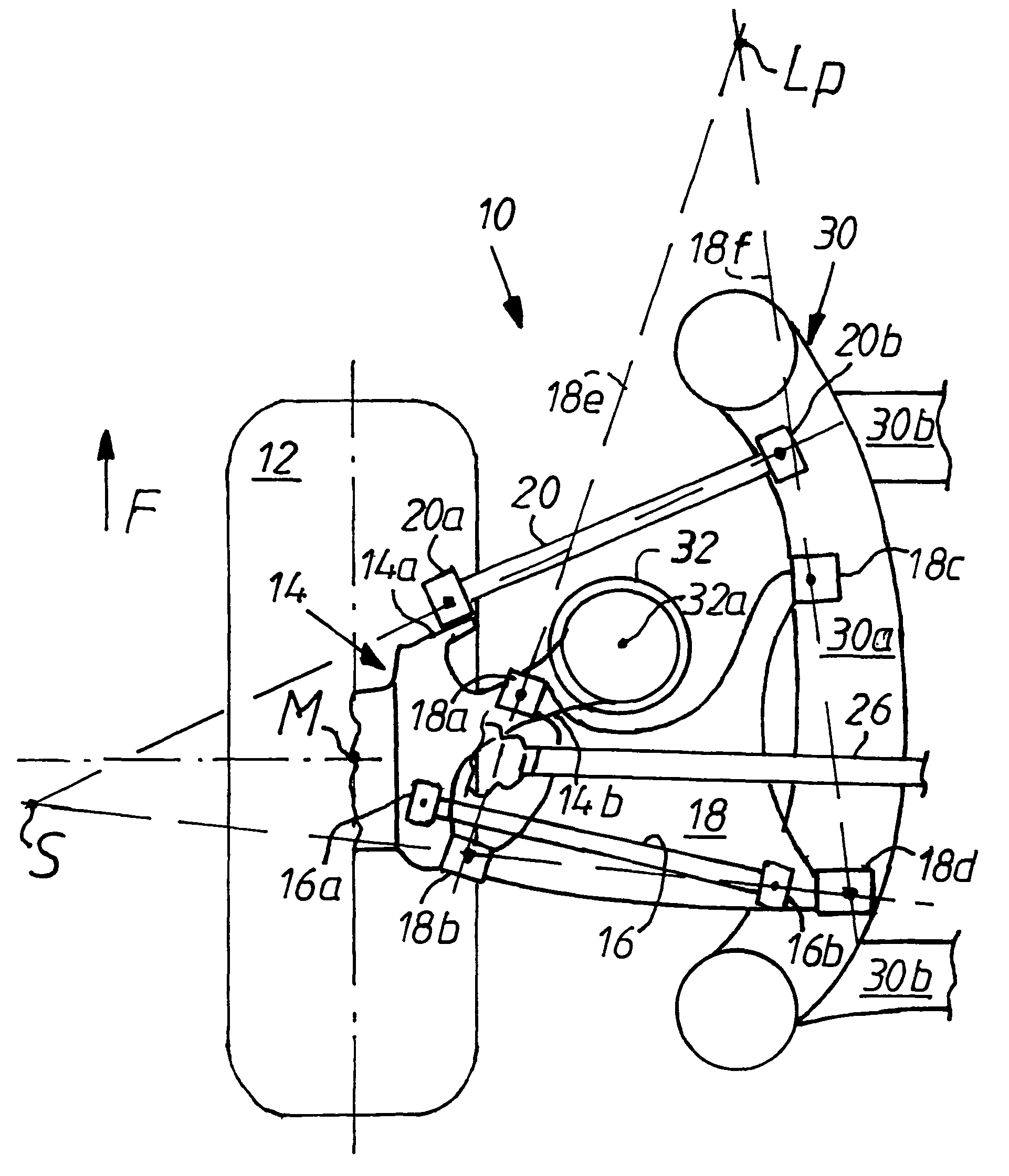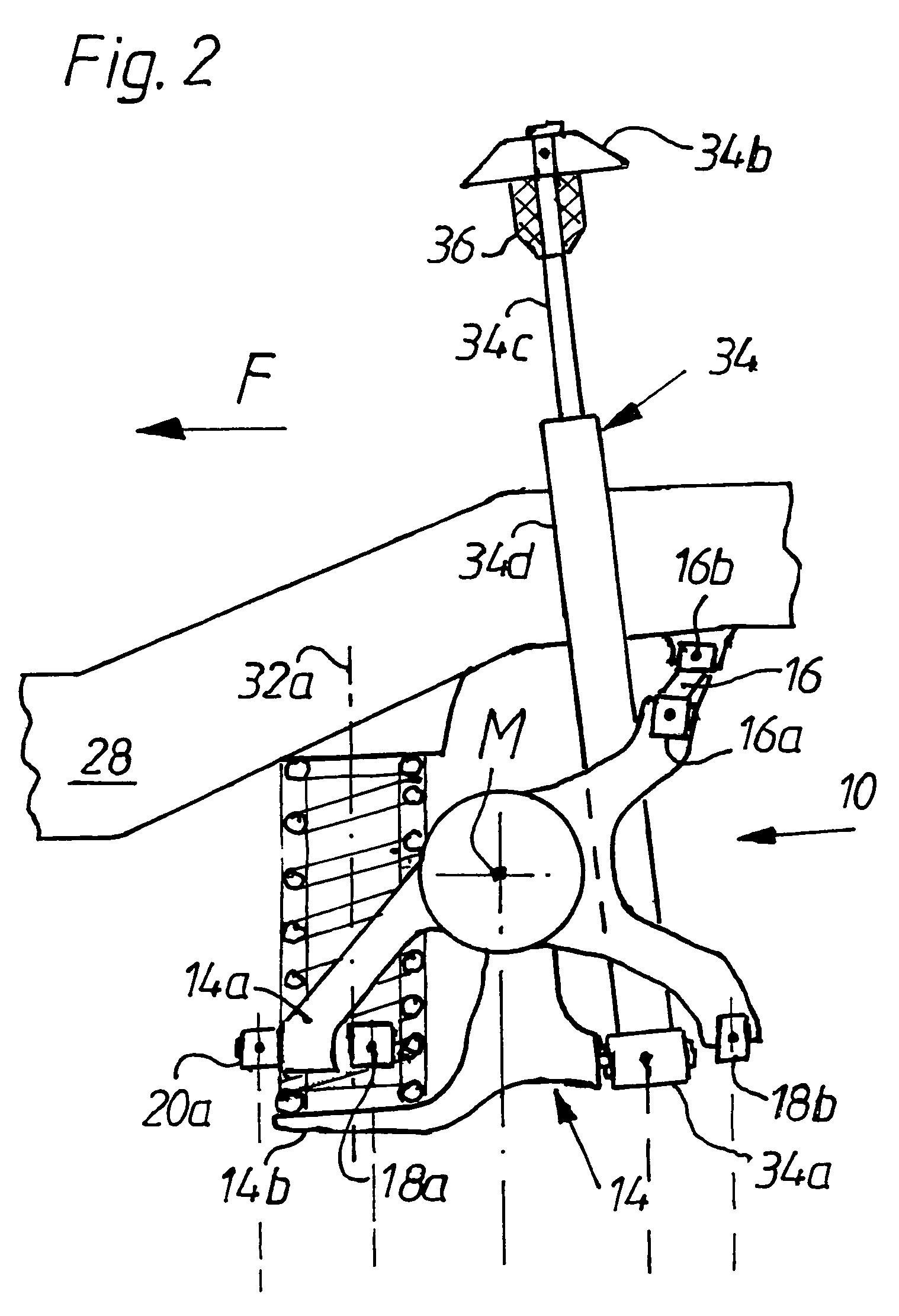Independent wheel suspension for the rear wheels of motor vehicles
a technology for rear wheels and motor vehicles, applied in the direction of suspension arms, resilient suspensions, vehicle components, etc., to achieve the effect of preventing undesirable joint steering of the wheel, less bent at an angle, and favorable tying
- Summary
- Abstract
- Description
- Claims
- Application Information
AI Technical Summary
Benefits of technology
Problems solved by technology
Method used
Image
Examples
Embodiment Construction
[0021]The wheel support 14—in which the rear wheel 12 is rotatably mounted above a drive shaft 26 not shown—is guided in an upper guide rod plane (see FIG. 2) over the guide rod 16 with guide rod bearings 16a, 16b and in a lower guide rod plane by means of the guide rod 18 by way of guide rod bearings 18a, 18b and 18c, 18d, and, lastly, over the other guide rod 20 by way of guide rod bearings 20 by way of guide rod bearings 20a, 20b as a guide.
[0022]The guide rod bearings 16a, 18a, 18b, 20a are mounted, in a manner yet to be described, on the wheel support 14 on one side and on the body of the vehicle or in the exemplary embodiment (shown only in part) on an auxiliary frame 30 on the other side by conventional means to form drag bearings. The guide rod bearings in question could be conventional rubber-metal bush bearings and optionally in part ball bearings. The auxiliary frame 30 has on each side of the vehicle a spar 30a and cross-spars 30b connecting them to form a frame, the low...
PUM
 Login to View More
Login to View More Abstract
Description
Claims
Application Information
 Login to View More
Login to View More - R&D
- Intellectual Property
- Life Sciences
- Materials
- Tech Scout
- Unparalleled Data Quality
- Higher Quality Content
- 60% Fewer Hallucinations
Browse by: Latest US Patents, China's latest patents, Technical Efficacy Thesaurus, Application Domain, Technology Topic, Popular Technical Reports.
© 2025 PatSnap. All rights reserved.Legal|Privacy policy|Modern Slavery Act Transparency Statement|Sitemap|About US| Contact US: help@patsnap.com



